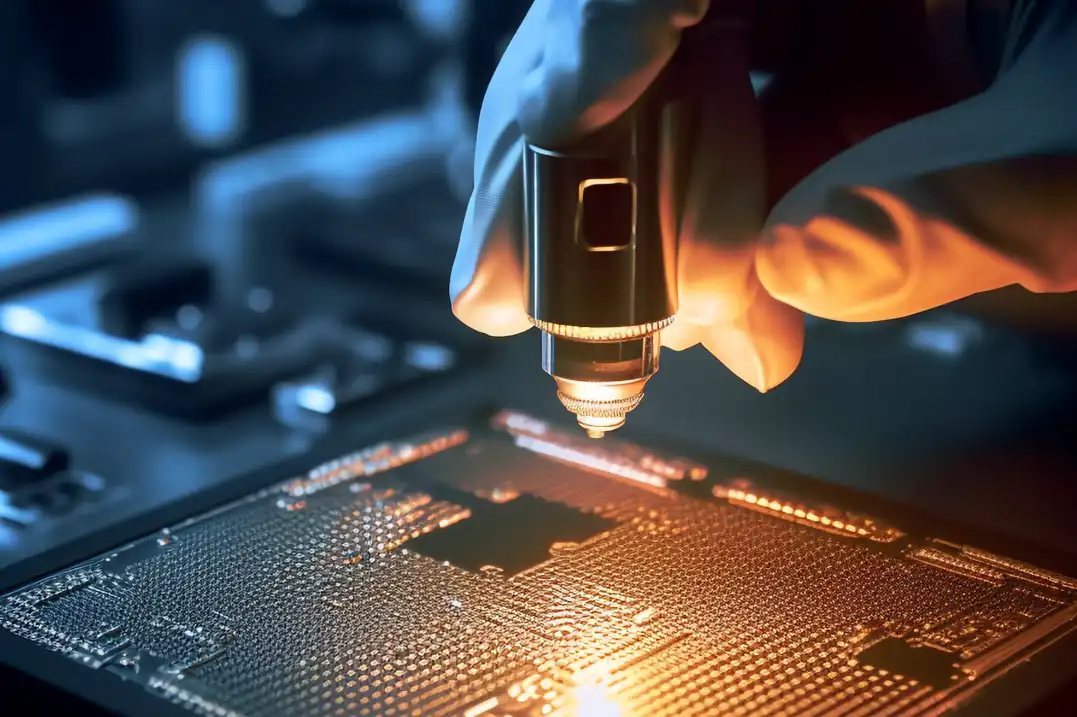South Korea's semiconductor industry rebounds strongly, and global markets welcome strong recovery
New users can click on "International Business Daily" to pay attention
South Korea's semiconductor production surged 65.3% on-year in February, marking the highest since 2009, according to the latest data released by Statistics Korea on Tuesday. The country's chip inventory fell for the second consecutive month, down 16.2%, further demonstrating strong market demand. Semiconductor shipments also expanded 59.0%, slightly lower than a 62.7% on-year increase in January. In addition, the Ministry of Trade, Industry and Energy said that the country's exports of semiconductor chips reached $11.7 billion in March, up 35.7% on-year, the highest monthly figure since March 2022. Exports of displays climbed 16.2% and those of computers rose 24.5%, highlighting the growth momentum driven by tech demand.
On the back of the largest share of Korean exports, semiconductors, and despite the impact of the Lunar New Year holiday, the overall Korean industrial output still increased by a better-than-expected 4.8% in February, and South Korea's domestic economy is expected to remain robust.

SEMICON China 2024, the 20th China International Semiconductor Exhibition, opened in Shanghai, China on March 20th. SEMI Global Vice President and China President, Simon Yang, said at the exhibition that the global semiconductor industry experienced a downturn last year, with industry revenue falling by about 11%. It is expected that global semiconductor sales will grow by 13%~16% this year, possibly reaching 600 billion US dollars, and is expected to achieve a milestone of 1 trillion US dollars by around 2030.
Driven by new energy, autonomous driving, generative AI, Internet of Things, intelligent manufacturing and other fields, the semiconductor market is facing increasingly strong market demand. In particular, the surge in demand for artificial intelligence-related memory is one of the main factors in the growth of semiconductor production. Bloomberg economist Hyosung Kwon said:"Driven by strong demand for AI memory chips, we expect semiconductor production to grow steadily in March." Zheshang Securities Research Report pointed out that since November 2023, global and Chinese semiconductor sales have achieved positive growth for three consecutive months year-on-year and the growth has expanded, reflecting the upward trend of the industry's prosperity. Global semiconductor sales in January 2024 were US$47.6 billion, a year-on-year increase of 15%, and the growth rate expanded by 3.6 percentage points. From the perspective of downstream demand, global smartphone shipments turned positive year-on-year in the fourth quarter of 2023, and sales of new energy vehicles continued to increase at a high rate. From the perspective of downstream prices, the global storage market will grow rapidly in the fourth quarter of 2023, and memory chip prices will recover significantly. Terminal demand is picking up and product prices are rising, and the semiconductor cycle is showing positive signs.

The Semiconductor Industry Association (SIA) data predicts that the global semiconductor sales will be around $520 billion with a year-over-year decline of 9.4% in 2023. However, with a sharp surge in the demand for AI, the chip demand is currently showing a significant recovery momentum, and the global semiconductor market is expected to rebound strongly in 2024. Many mainstream industry institutions are optimistic about the semiconductor market in 2024. Among them, the World Semiconductor Trade Statistics Association (WSTS) stated that the global semiconductor sales would increase by 13.1% to $588.364 billion in 2024, reaching a record high, due to the increased demand for semiconductor products with the popularity of generative AI, and a significant recovery in the storage demand. Internet Data Center (IDC) is more optimistic than WSTS, and believes that the global semiconductor sales will reach $632.8 billion, with a 20.20% year-over-year growth. In addition, Gartner also believes that the global semiconductor sales in 2024 will usher in a growth period, with a growth rate of 16.80% and reaching $632.8 billion.
Park Sang-hyun, an economist at HI Investment Securities in South Korea, said:"Global manufacturing activity is recovering, and although at a moderate pace, South Korean exports will continue to recover, with semiconductors taking the lead." An obvious example is that the China Purchasing Managers Index released by the Service Industry Survey Center of the National Bureau of Statistics of China and the China Federation of Logistics and Purchasing on March 31 showed that China's manufacturing purchasing managers index, non-manufacturing business activity index and comprehensive PMI output index in March were 50.8%, 53.0% and 52.7%, respectively, up 1.7, 1.6 and 1.8 percentage points from the previous month. The three major indices are all in the expansion range, and enterprises 'production and operation activities are accelerating. China's economic prosperity is picking up. Japan's Nomura Securities said trade-dependent economies across Asia will benefit from strong U.S. economic growth trends and improving European economic prospects this year.
Nomura analysts Rob Subbaraman and Si Ying Toh wrote in a research report:We expect continuing expansion in the magnitude of Asia's export recovery in the coming months.
